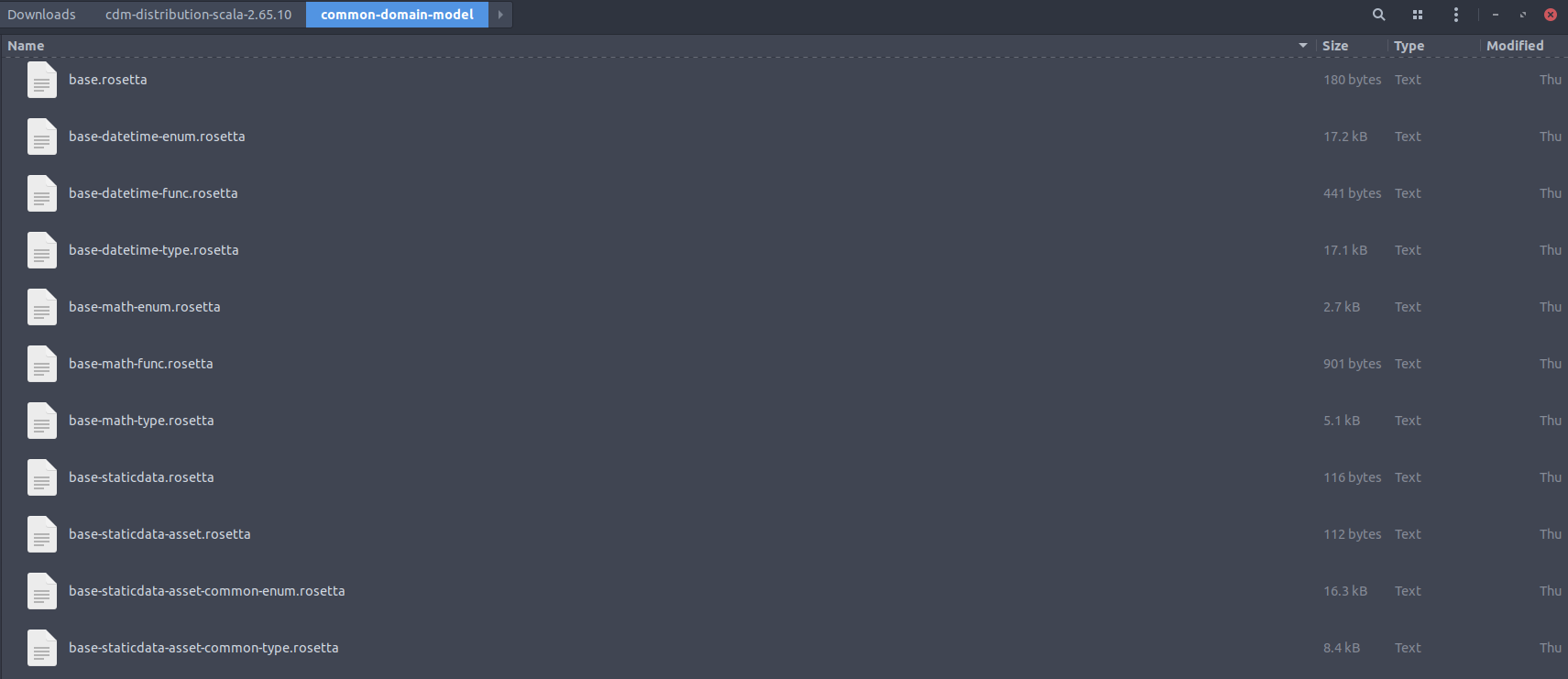CDM Java Distribution Guidelines
This section provides directions for downloading and using the Java version of CDM. Topics covered are listed below:
- Prerequisites
- Introduction
- Setting Up Google's Guice Injector
- Generating Global Keys and Qualifications
- Validating the CDM instance
Prerequisites
- Java SDK 8 or higher
Introduction
- The CDM in Java is built using maven and is published to Maven Central.
Setup
In order to use the CDM in a Maven project, the following dependency needs to be added to the project pom.xml:
<dependency>
<groupId>org.finos.cdm</groupId>
<artifactId>cdm-java</artifactId>
<version>LATEST</version>
</dependency>
- The CDM model objects are classified into namespaces (cdm.base, cdm.base.staticdata, etc). These namespaces translate into Java packages with the same name, with each package containing a package-info file.

- The CDM uses builder pattern for each of the pojos. The distribution ships with the json to java object serialisers.
NOTE: All current CDM dependencies are available in Maven Central. CDM releases prior to version 4.0.0 can be found in the ISDA repository: https://europe-west1-maven.pkg.dev/production-208613/isda-maven. The dependencies of CDM releases prior to version 4.0.0 can be found in the REGnosys repository: https://europe-west1-maven.pkg.dev/production-208613/public-maven. Add the following snippet to the
<repositories>section of your projectpom.xml:<repositories>
<!-- remove references to REGnosys Jfrog -->
<repository>
<id>isda-maven</id>
<url>https://europe-west1-maven.pkg.dev/production-208613/isda-maven</url>
<releases>
<enabled>true</enabled>
</releases>
<snapshots>
<enabled>false</enabled>
</snapshots>
</repository>
<repository>
<id>public-maven</id>
<url>https://europe-west1-maven.pkg.dev/production-208613/public-maven</url>
<releases>
<enabled>true</enabled>
</releases>
<snapshots>
<enabled>false</enabled>
</snapshots>
</repository>
<!-- existing contents -->
</repositories>
Setting Up Google's Guice Injector
CDM uses Google's Guice as a dependency manager. Injector is the core of Guice that contains the whole object graph (context).
The first step is to initialise the injector. There are two options:
Initialising the Injector, Option 1: Using provided CdmRuntimeModule
The CDM java distribution comes with a pre-built CDM module that can be used to create an injector. It provides bindings to required classes (ModelObjectValidator and QualifyFunctionFactory) as well as binding in implementations for several CDM functions such as Abs, Sum
Injector injector = Guice.createInjector(new CdmRuntimeModule()));
Initialising the Injector, Option 2: Build your own Module
To build a custom injector that is not based on the CDM's runtime module, first create a Guice module with a minimum of the two bindings shown belows:
public class GenericModule extends AbstractModule {
@Override
protected void configure() {
bind(ModelObjectValidator.class).to(RosettaTypeValidator.class);
bind(QualifyFunctionFactory.class).to(QualifyFunctionFactory.Default.class);
}
}
Once this module has been built it can be used to create the custom injector.
Injector injector = Guice.createInjector(new GenericModule()));
Generating Global Keys and Qualifications
Within the model any data object marked with metadata key will have a Global Key generated when that data object is populated. These Global Keys are automatically generated using hash algorithms. The model objects can be post-processed with Global Keys and qualified by using the injector created in the previous step to run the code shown below:
Contract cdmInstance = buildCdmInstance();
Contract.ContractBuilder builder = cdmInstance.toBuilder();
keyProcessor.runProcessStep(Contract.class, builder);
Contract updatedCdmInstance = builder.build();
Validating the CDM instance
In order to validate the CDM instance, it is necessary to create a RosettaTypeValidator and post process the instance as follows:
RosettaTypeValidator validator = injector.getInstance(RosettaTypeValidator.class);
ValidationReport validationReport = validator.runProcessStep(cdmInstance.getClass(), cdmInstance.toBuilder());
if (validationReport.success()) {
List<ValidationResult<?>> validationResults = validationReport.validationFailures();
}
If the validation is unsuccessful then the validation results object will contain the list of all the validation failures.